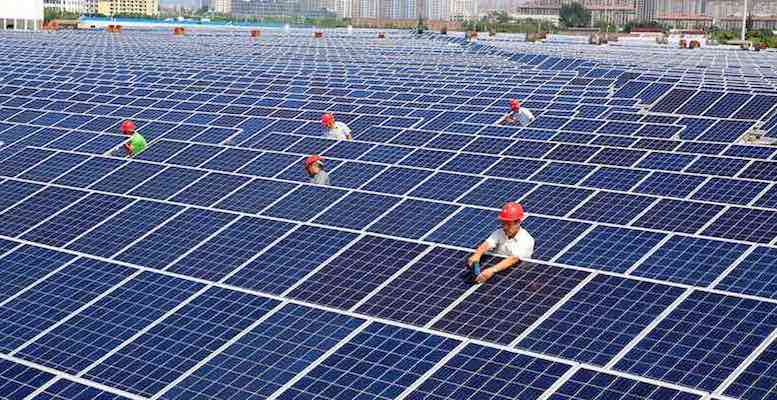Alicia García Herrero (Natixis) | China is taking a big slice of the cake from its prominent supply role as the world accelerates green transition. This is a rare spotlight of the Chinese economy given the pressure ranging from real estate sales to consumer confidence. China’s production of electric vehicles (EVs), batteries and solar panels, also known as the “New Three” sectors, have experienced fast growth in investment and exports. In a recent policy term, some of the sectors are also seen as “new productive forces”.
However, the surge in demand and seemingly vast opportunities come with risks. As China’s sole focus on manufacturing and supply-side stimulus collide with global industrial policies, the chorus calling for economic and supply chain security can ignite geopolitical tensions and protectionism. If demand cannot catch up with supply, overcapacity can bring fiercer competition and the beginning of price wars.
Rome wasn’t built in a day
China’s dominance in green tech does not come overnight. With a large domestic market and government support, including tax incentives and subsidies, China has gained comparative edges by leapfrogging previous market leaders. As a result, China has made significant progress in overseas markets.
The share of the “New Three” sectors in China’s exports has grown from 1% in 2018 to 4.2% in 2023, becoming a rising star in manufacturing. In non-China markets, the well-known case is China supplied 88% of solar panels in 2023. Rising from 4% in 2018, China secured a market share of 11% for batteries and 28% for EVs. However, the greater role of China in green tech will affect existing auto leaders with intensified competition.
EVs and batteries: China has first mover advantage, but Asia sees growth from diversification
BYD has already surpassed Tesla as the biggest EV maker by sales volume but there are at least two challenges. The ranking can change a lot, and it will depend on how competitive Chinese EV makers are. If the traditional carmakers expand in EVs, they have revenue as a backup to invest in different streams, such as battery electric vehicles (BEVs), hybrid cars and hydrogen. For example, Toyota sold 11.2 million vehicles worldwide in 2023, more than 9.56 million of the BEV market. Its capex and R&D on electrification is similar to Tesla and BYD and four times more than Li Auto.
Chinese EV makers are supported by domestic revenue, and there is a long way to go to appeal to overseas customers. In non-China markets, BYD’s Yuan Plus is the only Chinese model in the top 15 sales. There has been a growing effort from Chinese EV makers to enter international markets, such as Europe, ASEAN and Latin America. China will continue to rely on cost advantages to produce and export.
Solar panel: Persisting but transitional overcapacity
While the global demand for solar panels has increased, the overcapacity risk is the highest among the “New Three Sectors”. The performance of Chinese solar cell makers looks resilient as the upstream material prices have declined amid lower producer prices across the board. But this should not mask the fact that many firms offset lower final product prices with higher quantities.
The lower entry barrier and the monopolistic nature of the industry mean market leaders always need to invest to stay ahead. Solar is a very competitive market, and winners will take all if they bet on the right tech. It is highly cyclical, and it is almost guaranteed that there will be on-and-off and transitional overcapacity. For example, the TOPCon N-type cell is the most popular, and producers such as Trina and Jinko Solar have defied the gravity of poor demand. LONGi Green Energy is the once largest manufacturer, but its bets on the BC cells leads to lower shipments in the short run.
Geopolitics and overcapacity in play
While the green transition will bring opportunities to Asia and growth from a low base, there can be headwinds to disrupt revenue growth and supply chains. Geopolitics is vital in shaping production and investment, especially with protectionism and industrial policies. Many may have mistakenly considered the trend as the competition between the US (or broadly the West) and China. The reality is there are also barriers from the rest of the world, such as India, Turkey, and Brazil.
Slower domestic demand growth also means China will export more. One of the ways to measure overcapacity is to look at the asset turnover ratio. For the sectors related to green transition, EVs will likely face more pressure from a lower asset turnover ratio versus historical average. For EV batteries and solar panels, the situation is better than 2017-19, but rapid capex growth and existing demand gap (production minus demand) also reflect potential pressure. This is also evident in China’s deflationary environment. Such development can only spike more tensions from the angle of supply chain security and de-risking for many governments.
The opportunities in Asia are apparent with the green transition, but they will be accompanied by geopolitical and overcapacity risks. China will likely remain a forerunner in green tech demand and supply. However, industrial policies and friend-shoring will pose headwinds to China’s exports of EVs, batteries, and solar panels. This means there will be opportunities for non-China firms, such as Korea and Japan, in the affected markets. However, it is increasingly a dilemma for the world to pick between supply chain security and a fast green transition. The answer to this question is increasingly unclear, varying from country to country but also over time.





